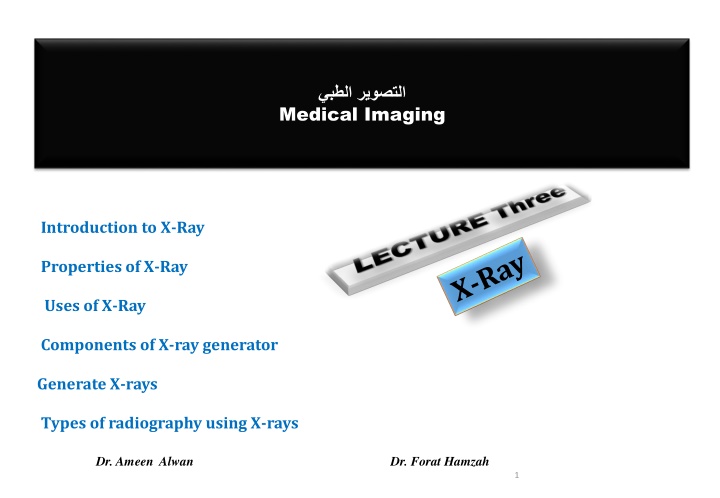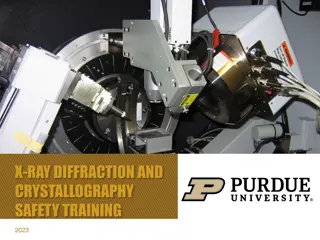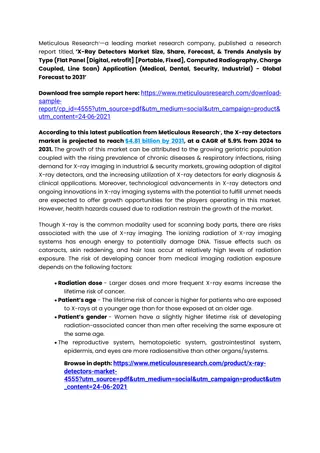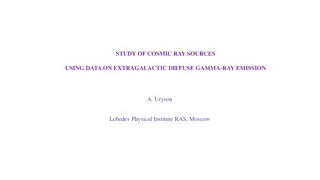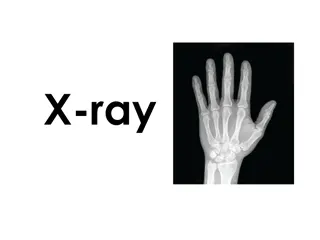Introduction to X-Ray Properties and Uses
X-ray is electromagnetic radiation with the ability to pass through various materials, discovered by Wilhelm Roentgen in 1895. This type of radiation has both beneficial and potentially harmful properties, making it valuable in medical imaging, radiation therapy, and airport security. The components of an X-ray generator play a crucial role in the production of X-rays through interactions between the cathode and anode. Understanding the properties and uses of X-rays is essential in various applications.
Download Presentation

Please find below an Image/Link to download the presentation.
The content on the website is provided AS IS for your information and personal use only. It may not be sold, licensed, or shared on other websites without obtaining consent from the author.If you encounter any issues during the download, it is possible that the publisher has removed the file from their server.
You are allowed to download the files provided on this website for personal or commercial use, subject to the condition that they are used lawfully. All files are the property of their respective owners.
The content on the website is provided AS IS for your information and personal use only. It may not be sold, licensed, or shared on other websites without obtaining consent from the author.
E N D
Presentation Transcript
Medical Imaging Introduction to X-Ray Properties of X-Ray Uses of X-Ray Components of X-ray generator Generate X-rays Types of radiography using X-rays Dr. Ameen Alwan Dr. Forat Hamzah 1
Introduction to X-Ray X-ray is electromagnetic radiation with short wavelength of 10-10m and high frequency of 1018Hz, which is able to pass through many materials. In 1895, Wilhelm Roentgen, a German physicist, discovered radiation, which he called X-rays that could be used to look into the human body. Wilhelm Roentgen The first use of X-rays was in medical diagnosis by Henri Becquerel within six months of their discovery in 1895, Henri Becquerel
Properties of X-Ray X-ray is a type of electromagnetic radiation with frequency of 1018Hz and wavelength of 10-10m X-ray has the ability to pass through liquids, solids, gases and many materials. X-ray is traveling in a straight line. X-ray is invisible to the eye. Long x-ray exposure can be harmful to living organisms, and short exposure to x-rays may be is not harmful. 3
Uses of X-Ray Medical image: X-rays are used to view images of the different parts in the human body (Uses in medical images) because that the X-rays penetrate different materials Radiation therapy: X-rays play an important role in the fight cancer, with high energy radiation used to kill cancer cells. Airport security: x-ray security system that scans baggage to check for dangerous items and full body x-ray scans. 4
Components of X-ray generator + Anode Glass tube x-ray tube - Cathode X-rays generated by an X-ray tube X-ray production x-ray tube The x-ray tube is an electrical device used for generation of X-ray , which constant from many parts: (i) Glass tube : It is a vacuum glass tube (pyrex glass) that contains the anode and cathode (ii) Cathode : It consists of a tungsten wire that has a high melting point of 3410 C (iii) Anode : It is a copper rod made with an tilted surface
Generate X-rays Cathode Anode + - - When the current passes through cathode (tungsten wire), the temperature in the ------ -----cathode will increase so that it can release electrons towards the anode. Therefore, according to the excited-state atom; X-rays are generated from the----- - -------- interaction of the high-energy electrons that come from the cathode and then anode
Types of radiography using X-rays (1) Plain X-rays (2) Computed Tomography (CT) (3) Fluoroscopy (4) Mammography (5) Angiography 7
Who discovered radiation in 1895? - A) Wilhelm Roentgen. - B) Henri Becquerel - C) Marie Curie - D) Albert Einstein E) None of them 3. Which of the following statements about X-rays is true? A) X-rays cannot pass through solids B) X-rays are visible to the human eye. C) X-rays travel in a zigzag pattern D) X-rays have harmful effects only in long exposures. E) All of them What happens when current passes through the cathode (tungsten wire) in X-ray production? - A) Anode B) Cathode. C) Filament D) Vacuum E) Insulator 2. How are X-rays generated according to the excited-state atom? - A) Chemical B) Thermal C) Electrical. - D) Magnetic E) Nuclear 8
